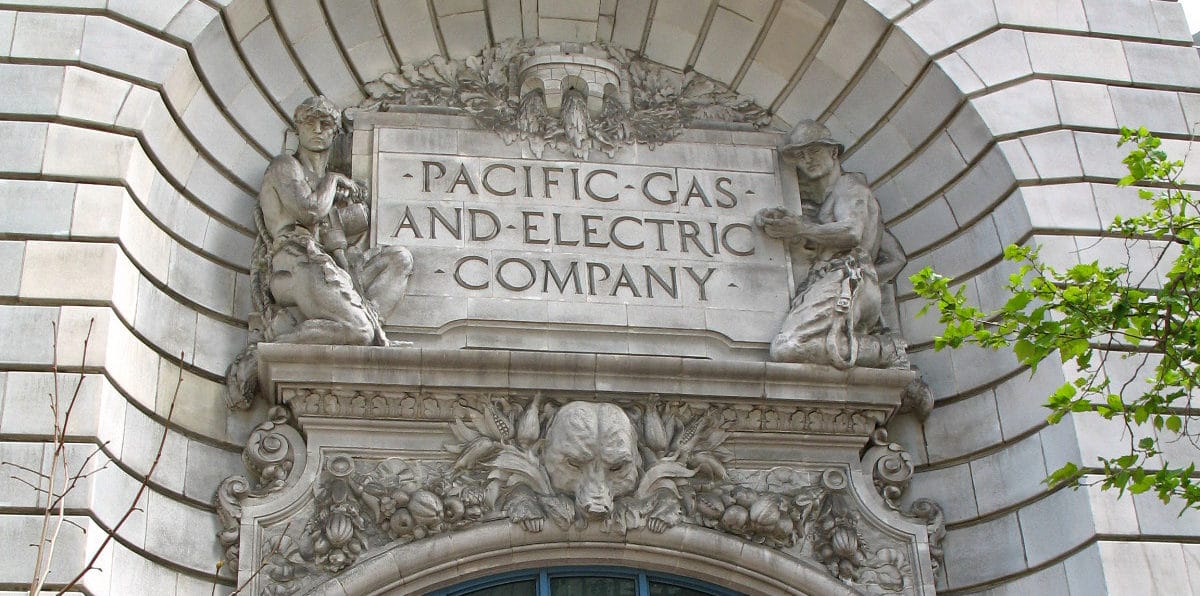
pv magazine: Could PG&E’s bankruptcy affect PV system owners who are being compensated under net metering or NM 2.0?
Scott Murtishaw: We don’t foresee any impact on net metering customers; It is hard to see how the bankruptcy could affect them. Net metering is just an ongoing billing mechanism. And we don’t see how the bankruptcy could affect net metering customers going forward.
pv magazine: Could PG&E suspend Self Generation Incentive Program (SGIP) payments for energy storage?
Murtishaw: CALSSA received direct reassurance from PG&E today that SGIP would continue as normal, and PG&E’s communication confirmed our understanding that SGIP funds are ratepayer money held in balancing accounts exclusively for SGIP.
The one possibility is that if there are staffing impacts at PG&E; if there is turnover and if they are shuffled around, it could potentially affect the timeline of payments.
pv magazine: Are there other ways in which this could affect the rooftop solar and energy storage market in PG&E’s service area going forward?
Murtishaw: This is longer term and highly speculative, and there are two distinct pathways by which PG&E could be broken up. The first is if some municipalities see this as an opportunity to condemn PG&E distribution grids and form municipal utilities. If that occurs, those publicly owned utilities would not fall under the jurisdiction of the California Public Utilities Commission (CPUC), would not have an SGIP program, and would not be bound by the same net metering statutes as investor owned utilities.
The second involves taking operational responsibility away from PG&E and forming an independent distribution system operator. Because that would be a novel type of entity, the precise jurisdictional oversight structures would have to be established, but it would likely continue to operate CPUC jurisdiction.
So we would obviously fight very hard to fight for net metering in any municipalization effort, so that any existing net metering customers would remain under similar arrangements.
That is a big one, and if that happens – in theory, there could be customers at risk. The legislature could also act to make sure that municipalization would protect customers, to avoid infuriating an entire class of ratepayers.
pv magazine: I heard mention of this around CPUC’s investigation into PG&E that was announced just before Christmas, but are there other active conversations about a potential breakup of PG&E, or municipalization?
Murtishaw: There are people who have had some interest for a few years now, in either fostering this municipalization or breaking up PG&E. There was a ballot initiative a few years ago that would have had the state take over all investor owned utilities. There have been discussions in various places, including at Energy Innovation, or some other institutes that have been thinking about separating functions so that you have more of a distribution system operator, with an independent entity would operating the distribution grid.
I don’t see a direct line between what happened here leading to a distribution system operator. It might affect how interconnection process, or facilitation of certain programs, proceed, but that is speculative.
pv magazine: Could PG&E’s bankruptcy affect large-scale wind, solar and battery project development?
Murtishaw: The really important thing to keep in mind in terms of front-of-the-meter developments is that CCAs are currently a substantial share of the load, and over the next couple of years they will constitute a vast majority of PG&E’s load. So that is definitely a mitigating concern.
Once the filing is made, any debts made after the filing are not subject to the bankruptcy court’s authority. I think the bigger factor here is the rise of the CCAs.
pv magazine What should we expect now?
Murtishaw: For now we do not discern any real threat to behind-the-meter installations. For front of the meter, I would expect that PG&E would be hesitant to take on new debt equivalents. They have already made it pretty clear that given the rise of CCA load, they don’t want to procure any more renewables.
For the non-essential activities, like some of the distribution service tariffs, those get delayed, because PG&E may be really trying to minimize any new debt.
pv magazine: Is there anything else we should expect?
Murtishaw: I think at this point we have to allow this process to play out more with PG&E initiating the filing – at this point they have only filed a notice of intent to file. There are going to be months of procedural filing to figure out what the major next steps are.
This content is protected by copyright and may not be reused. If you want to cooperate with us and would like to reuse some of our content, please contact: editors@pv-magazine.com.









By submitting this form you agree to pv magazine using your data for the purposes of publishing your comment.
Your personal data will only be disclosed or otherwise transmitted to third parties for the purposes of spam filtering or if this is necessary for technical maintenance of the website. Any other transfer to third parties will not take place unless this is justified on the basis of applicable data protection regulations or if pv magazine is legally obliged to do so.
You may revoke this consent at any time with effect for the future, in which case your personal data will be deleted immediately. Otherwise, your data will be deleted if pv magazine has processed your request or the purpose of data storage is fulfilled.
Further information on data privacy can be found in our Data Protection Policy.